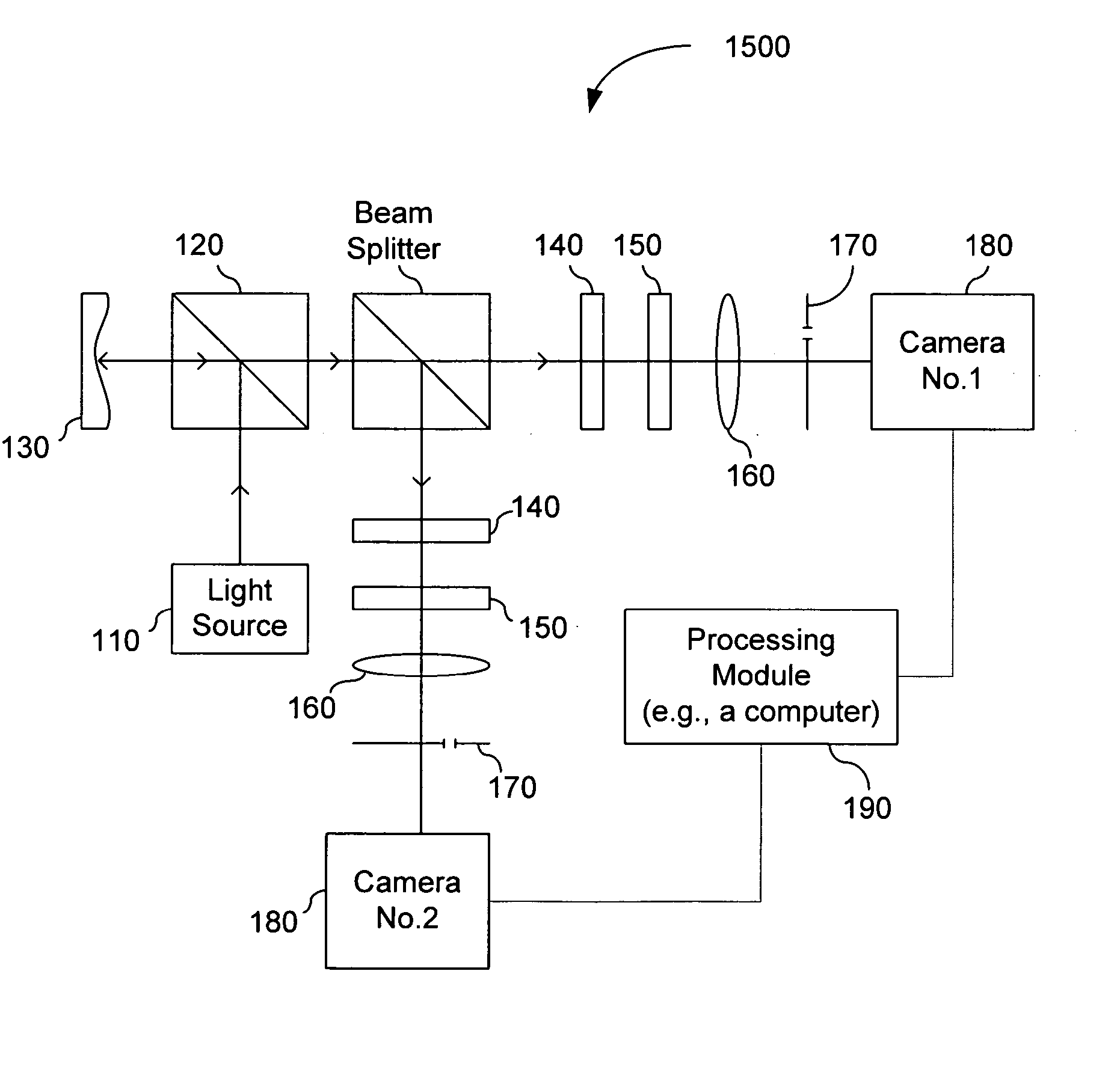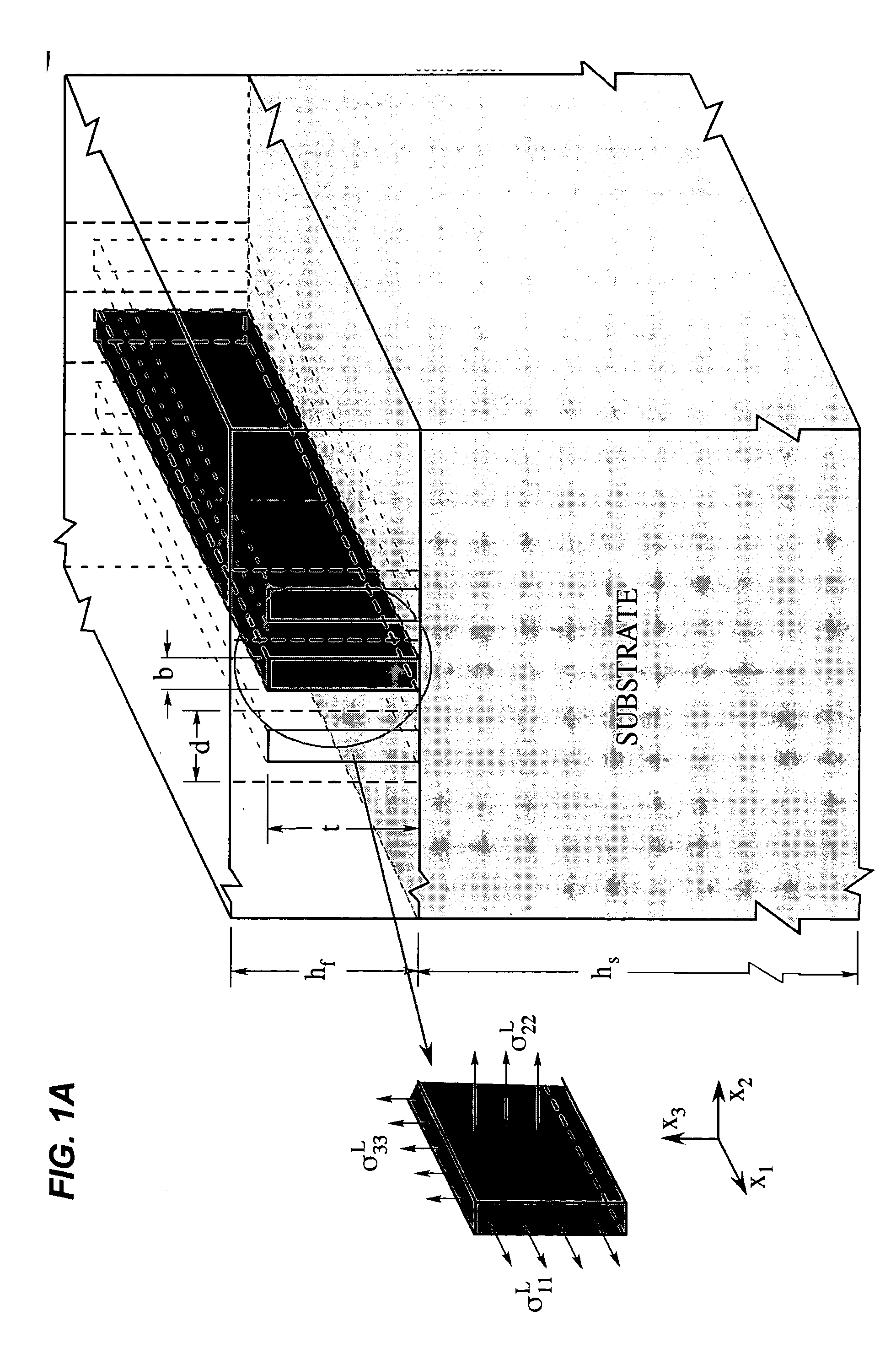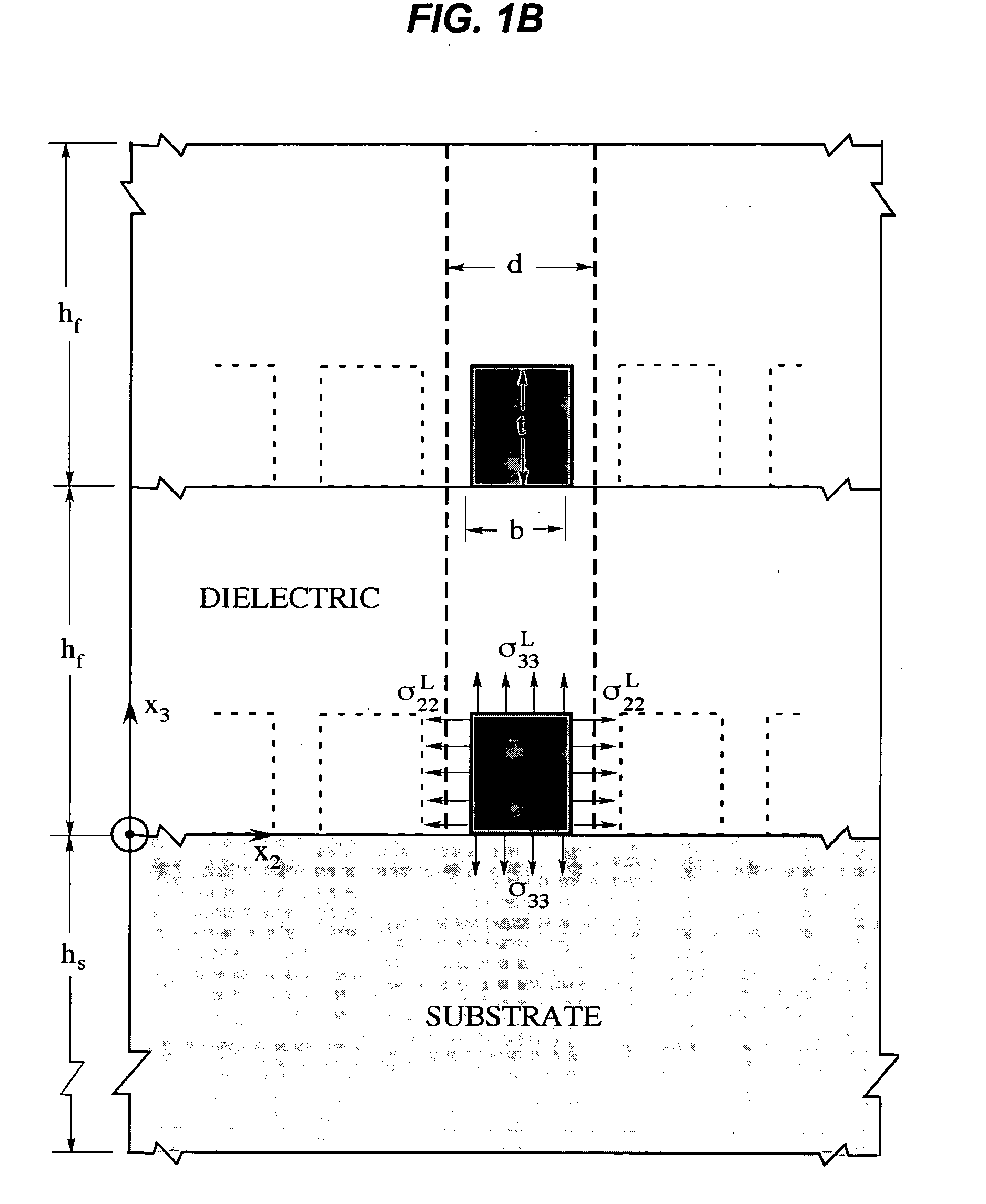Analysis and monitoring of stresses in embedded lines and vias integrated on substrates
a technology of embedded lines and vias, which is applied in the direction of force measurement by measuring optical property variation, semiconductor/solid-state device testing/measurement, instruments, etc., can solve the problems of complex stress state of each device feature, adversely affecting the integrity or effectiveness of subsequent processing steps, or the performance and reliability of the device under such stress, and achieves the effect of improving the overall yield
- Summary
- Abstract
- Description
- Claims
- Application Information
AI Technical Summary
Benefits of technology
Problems solved by technology
Method used
Image
Examples
Embodiment Construction
FIGS. 1A and 1B show geometries representative of exemplary integrated structures for the analytical computations and expressions of stresses described based on a thermoelastic composite analysis. FIG. 1A shows one layer with embedded, parallel tall line features formed on a thick substrate. FIG. 1B shows a multi-layer structure having two or more layers with embedded, parallel line features over the substrate. In general, such a multi-layer structure has n layers where a 2-layer example for n=2 is illustrated in FIG. 1B. A Cartesian coordinate system (x1,x2,x3) is shown in the insert. The directions marked as x1 and x2 represent two orthogonal directions parallel to the substrate where the direction x1 is along the longitudinal direction of the line features in the layer and the direction x2 is perpendicular to the line features. The direction marked as x3 represents the direction normal to the plane of the substrate.
In each layer for a multi-layer structure, the embedded line fea...
PUM
 Login to View More
Login to View More Abstract
Description
Claims
Application Information
 Login to View More
Login to View More - R&D
- Intellectual Property
- Life Sciences
- Materials
- Tech Scout
- Unparalleled Data Quality
- Higher Quality Content
- 60% Fewer Hallucinations
Browse by: Latest US Patents, China's latest patents, Technical Efficacy Thesaurus, Application Domain, Technology Topic, Popular Technical Reports.
© 2025 PatSnap. All rights reserved.Legal|Privacy policy|Modern Slavery Act Transparency Statement|Sitemap|About US| Contact US: help@patsnap.com



